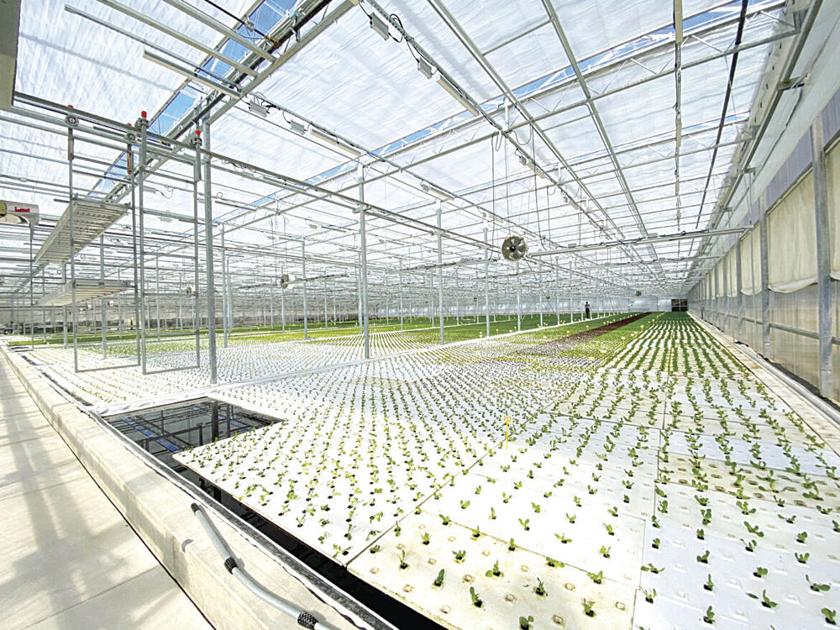
LANSING — For lettuce that calls indoor farms home, “sunlight” can be blue, pink, red or other colors.
That’s because LED lights allow growers to pick the spectrums of the sun that are most useful for plants, said Erik Runkle, a Michigan State University horticulture professor who specializes in indoor farm lighting.
Usually, lettuce is grown and exported from California’s sunny Salinas Valley, nicknamed “America’s Salad Bowl.” But some Midwest farmers, like those across the nation, are growing their own indoors with LED lights.
“Lettuce is a popular high-value indoor crop because it is one of the most consumed vegetables,” Runkle said.
“The fundamentals for an indoor farm are LED lighting and controlled ventilation,” he said. “A delivery system of water and nutrients is also needed, whether it be hydroponics, aeroponics or manual.”
LED lights tolerate growing conditions like getting wet, he said.
“The intensity is between 10% and 20% of the full sun, but 10 to 15 times more than you’d see in a home,” he said.
The three most commonly seen colors at indoor farms are red, blue and sometimes green, he said, and the color of lights can influence lettuce’s color, texture, size and nutritional quality.
Not every indoor farm uses those colors or solely LED lights, however.
Revolution Farms in Caledonia uses a broad-spectrum light, head grower Tam Serage said.
The light produces a white color because of the mixed wavelengths of blue, green, yellow, orange and red, he said.
Revolution Farms grows kale and lettuce including romaine and sweet crisp.
The 50,000-square-foot greenhouse uses hydroponics to water lettuce and feed them nutrients. This spring, a newly added part of the farm will be fully automated and use a nutrient filter that supplies lettuce with water and nutrients, Serage said.
Pure Green Farms in South Bend, Indiana, uses a mixture of sunlight, high pressure sodium lights and LED lights are used, said chief executive officer Joe McGuire. The LED lights include the full spectrum of colors.
Pure Green Farms grows spinach and romaine, baby red and green leaf lettuce. The farm finished its first harvest in February, McGuire said.
The process from seed to harvest is fully automated, and a machine does the packaging, he said, although workers still work in the greenhouse to ensure everything goes correctly.
“The only time someone touches the product is when it’s already in the container. They’re just placing the container in the cart,” he said.
Indoor farming is a small niche that Runkle said he believes will remain small.
LED lights are a major expense and can account for one-third of the total investment cost, he said. The cost to run an indoor farm is expensive, especially when factoring in automated technology.
April 02, 2021 at 05:00PM
https://ift.tt/3cHpG0Q
Technology extends 'Salad Bowl' to Midwest | News | shorelinemedia.net - shorelinemedia.net
https://ift.tt/3ekeW79
salad
No comments:
Post a Comment